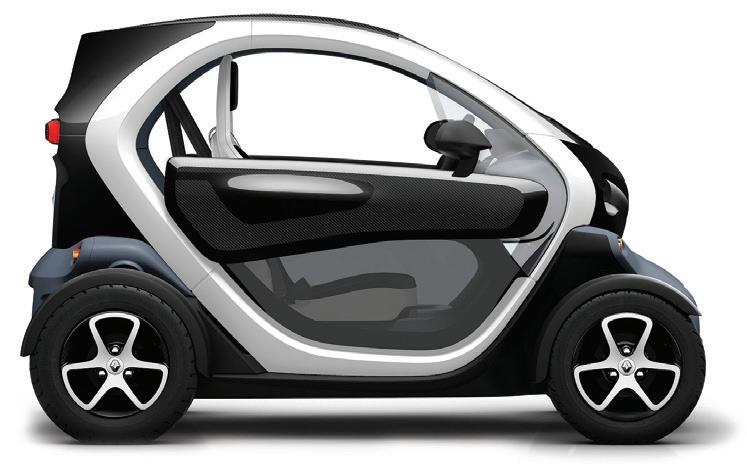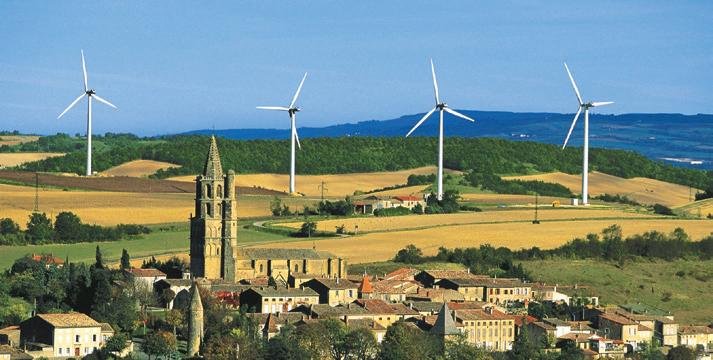
8 minute read
Enviroment Matters
It's Our World
Sustainable, green, eco-friendly. They don’t all mean the same but they do add up to the same thing: looking after our environment.
Advertisement
The word “green” has been a colloquialism for decades referring to pretty much everything that benefits the environment. “Eco-friendly” is slightly different in that it relates to things that do not harm the planet specifically, and “sustainable”, according to the United Nations, refers to something that does not compromise the ability of future generations to meet their needs. Sustainability is seen to be the higher standard. Highlighting the future, it means that the item or the use of it has social and economical benefits and, at the same time, doesn’t use up too many resources or cause pollution.
It’s all about the life-cycle of a product, rather than a stage in its life. For instance, a product may be made from renewable resources and referred to as being “green” but, if it requires a lot of energy in its manufacture or distribution, or cannot be disposed of properly, it is not sustainable. With, thank goodness, so much awareness being placed on environmental and social responsibility, we thought we would look at what is happening here in France.
TODAY IN FRANCE
An environmental report is published every four years by Le Commissariat Général au Développement Durable (CGDD) du Ministère de la Transition Ecologique et Solidaire (MTES). The latest, dated 24 October, 2019, shows that both air pollution and gas emissions have diminished between 2000 and 2017. However, it also states that the effects of climate change have become more obvious with forest fires, heatwaves, droughts, floods and, of course, the excessive heat during the summer of 2019 being a prime example. The full report can be read at https:// bit.ly/33mpbl6 (secure link). Written in French, it identifies how a number of programmes are changing the ecological face of France. Here are a few examples.

ENVIRONMENTAL TARGETS
The modernisation of sewage treatment plants and specific measures taken in the agricultural sector since 2000 have been improving the quality of water and rivers. Whilst they have helped to reduce the presence of organic materials such as nitrates and phosphates, the levels reaching the sea via rivers are still unacceptable. These, together with other coastline and marine waste regulations, will continue to work towards the elimination of harmful emissions to the sea. La Loi Agriculture et Alimentation looks at food quality from both an environmental and nutritional viewpoint. Its aim is that organic farming will account for 15% of French agricultural land by 2020. As part of the 2018 plan for bio-diversity, measures have also been implemented to accelerate a reduction in the use of pesticides, the protection of bees and pollinators, and to preserve the quality and richness of the soil.
This year, the French Government has further expanded its Energy Savings Certificate scheme to help everyone to move away from fossil fuels and improve home insulation. A dedicated website at www.faire.fr provides details (in French) on what help is available and where to find it.

The electric Renault Twizy
The draft Mobility Orientation Bill has set a goal of 2050 for carbon neutrality in the road transport sector, with clear objectives to reduce new vehicle emissions, and to ban the sale of cars using carbon-based fossil fuels by 2040. As well as attractive conversion premiums for buyers of clean vehicles, the number of charging points will be increased five-fold by 2022.
In fact, electric vehicles are an integral part of the Government’s policy to fight both global warming and air pollution. As of 1 July this year, France had nearly 200,000 electric vehicles and 26,772 charging points, and electric vehicle registrations had increased by nearly 50% from the first half of 2018 to the first half of 2019. The objective of L’Energie de Déploiment du Véhicule Electrique is to have 1.2 million electric vehicles in 2023 and 4.8 million in 2028. At the moment, a bonus of EUR 6,000 is offered to help households, companies or communities to acquire an electric vehicle.

A French wind farm
TAKING ACTION
Saving energy and electricity, conserving water, reducing waste, reusing items, recycling and upcycling are just some of the ways that we can help save the environment.
Switch off and unplug electrical items that aren’t in use. Even in sleep mode, devices and appliances can still be drawing electricity.
Temperature settings that are slightly lower or higher than those outside won’t have to work as hard and will draw less energy.
Wear extra layers of clothing instead of bumping up the thermostat.
Switch to LED bulbs which, although more expensive to buy, last up to 25% longer and use up to 85% less energy.
Ditch the tumble dryer and use a clothes line. Only use dishwashers and washing machines when they are full, until then use a bowl to wash up in rather than fill the sink.
When shopping, reuse carrier bags, choose paper over plastic packaging, buy local to reduce transport costs.
Shorten showers, turn the water off when brushing teeth and don’t overfill the bath.
Using a pool cover can save up to 50% of water.
Choose reusable items, buy rechargeable batteries, and refill glass or metal bottles.
Recycle your glass, metal, plastic and paper, and upcycle or donate items.
Walk or ride a bike, limit car usage, take a bus or train and, when flying, stay longer instead of flying back and forth wherever possible.

Elisabeth Borne, Minister for Ecological & Inclusive Transition
GO ELECTRIC

Guy Sheridan, manager at Good-Turn Cycles in Eymet, explainswhat eBikes are all about.
Electric bikes (eBikes) have taken the world by storm, and they are here to stay. The optional assistance they provide allows people to ride further, tackle hilly terrain with ease, comfortably carry more cargo, or commute to work without breaking into a sweat!
To gain a better understanding of how eBikes work, their health benefits and how to choose the best electric bike for you, keep reading.
WORKING FOR YOU
Electric bikes include an onboard battery-powered motor that provides the rider with optional assistance as they ride. The bike senses input from the rider and will supply varying assistance, in accordance with the rider’s desired level. By changing the level of supplementary assistance, riders are able to decide how much, or how little help they receive during their ride.
EASY EXERCISE
At first glance eBikes can leave people with the impression that they won’t benefit from any exercise with an electric ride, which is certainly not the case.
These studies show that because of the pedal assistance, eBike riders go on longer rides and ride more often. Studies also show that, utilising the eBikes’ assistance, riders ride at a more moderate heart rate, which is more conducive to fat burning.
WHERE TO START

Try an electric cycle tour
So, if you are convinced that an electric bike might be right for you, where do you start? Shopping for an eBike can be overwhelming, not only do you have to worry about traditional bike components, but now you’re shopping for motors and batteries as well. Using the following steps will ease any anxiety as you make your decision.
First, it’s important to define what kind of riding you will be doing with your bike.
• Will you be riding on pavement, country lanes or on rough terrain or dirt?
• Will you be using your eBike as a car replacement, or just for recreation?
• How far do you think you will be riding? (Many electric bikes will power you up to 65km, and some even to 160km, so dream big!) Once you have those questions answered, you will have a good sense of the style of bike you’ll need. Second, visit your local eBike shop for a test ride! I always recommend riding any eBike for an hour or two to ensure an electric bike is what’s right for you. Once you’re really “bought into” electric bikes specifically, I recommend test riding several!
• Notice the differences between them such as how the motor initiates, how comfortable you feel on the bike, how well the brakes work.
• Investigate what comes standard on the bike. Do they have mud guards, integrated lights, a rear rack to carry cargo? A vibrant colour will help you to be seen on the roads.
• Think to the future, an electric bike is a big purchase, what type might you want for the long haul? Third, equipped with the knowledge gained from test riding several bikes, make your purchase! Good luck as you set out with your new electric bike! I am sure you will enjoy all the benefits.

www.goodturncycles.fr
Whether you are using your own muscle power or going electric, it is important to set out well prepared. Take a look back at Jase Alexander’s cycling articles in our July/ August 2018 issue for tips on bike sizes and fit, in September/October 2018 for what to wear, and in March/ April 2019 for ways to extend your ride and your fitness. You can find these in either the read-online section of our website or in Articles at www.thelocalbuzzmag.com.
The Local Buzz is the only A4 glossy magazine and comprehensive website covering these departments. Lifestyle focused, the magazine is informative, fun and highlights what’s on in the region. Looking for a local business, more listings of what’s on, articles, blogs and local information? Then visit our website at www.thelocalbuzzmag.com
By the way, if you can’t pick up a copy, every issue can be read on the website at www. thelocalbuzzmag.com/ read-online, and postal subscriptions are available.








